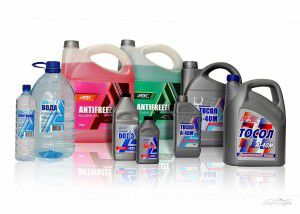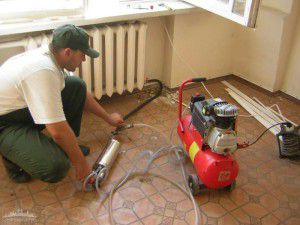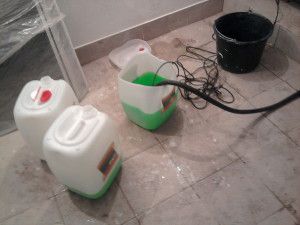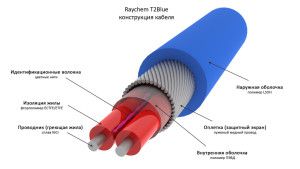Due to circumstances, it is not always possible to purchase a special antifreeze for the heating system. But what if there is a high probability of exposure to negative temperatures on pipes and radiators? Then the only way out is antifreeze for the heating system of the house. But before you start pouring it, you should familiarize yourself with all the possible effects that are inherent in this composition.
Why it is not recommended to pour antifreeze into the heating system

Before pouring antifreeze into the heating system, you need to find out its exact composition. In the vast majority of cases, it includes ethylene glycol. This substance is extremely toxic to humans. In the liquid state, one should beware of contact with eyes and exposed skin. But antifreeze, which turns into steam due to exposure to high temperatures, when overheating or a small leak of the coolant occurs, is much more dangerous.
But is it possible to pour antifreeze into the heating system in this case? Subject to all safety rules and requirements, the use of automotive antifreeze is allowed. However, in this case, it is necessary to take into account the peculiarities of the operation of the system:
- Antifreeze has a higher viscosity than water. Therefore, it is necessary to replace the circulation pump with a more powerful one - by 15-20%;
- High degree of fluidity. A small microcrack or loose connection in the pipeline is enough for the antifreeze for heating the house to begin to penetrate into the room. Be sure to replace all rubber gaskets with paronite;
- Can antifreeze be poured into an open-type heating with a leaky tank? No, this is strictly prohibited;
- The heating rate of the coolant with the addition of antifreeze will be lower than that of plain distilled water. This must be taken into account when choosing the temperature regime of the system;
- You can not pour antifreeze for heating systems in a concentrated form. This can damage the pump and damage the boiler. You can find out the ratio of automotive antifreeze to water on the label.
What other problems can you face after pouring an anti-freeze liquid? First of all, its quality. If the manufacturing technology is not followed after prolonged thermal exposure to the antifreeze solution, third-party substances appear in it in the form of white flakes. They negatively affect the state of the heating system, can cause a decrease in the throughput of the pipeline and the transfer of energy by the heat exchanger.
Antifreeze can corrode polypropylene pipes. It cannot be used in such pipelines.
Preparation of the solution and its filling

In order to add antifreeze to the heating system of a house, you need to correctly select its composition. All manufacturers produce ready-to-fill fluids. The temperature at which crystallization occurs is indicated in the name. For example - A40-M (-40 ° C). It is important to know that ready-made antifreeze cannot be diluted with water. To do this, you need to use special concentrates, 95% consisting of ethylene glycol.
Preparing antifreeze solution for heating
For the correct filling of antifreeze into the heating system, it is best to use a concentrate. This has the added benefit of allowing you to choose the ratio of antifreeze to distilled water yourself. In addition, you can more often find a fake of an already prepared solution than a concentrate.
First, it is necessary to determine the minimum temperature at which the effect of coolant crystallization will not be observed. To do this, you need to know the ratio of antifreeze for heating a house to water. They are presented in the table.
| Concentrate to water ratio | Freezing temperature, ° С |
| 1:1 | -40 |
| 2:3 | -30 |
| 1:2 | -20 |
But first you need to check if this antifreeze can be poured into the heating system. To do this, make a solution in a small transparent container (glass) and leave it for several days at room temperature. After this period, no sediment or foaming should be observed in the liquid. If this is present, the quality of the concentrate is very low.
When antifreeze leaks from the heating system, you must first ventilate the room, eliminate the accident and thoroughly wash the places where it got.
Pouring antifreeze into the heating system

Having decided that this particular brand of antifreeze can be poured into the heating, they begin to prepare the system. First, all the coolant is drained. If antifreeze was poured into the pipeline before, it should never be mixed with a new solution.
Then the following actions are performed:
- Thorough flushing of pipes and radiators. Before adding an antifreeze solution to the heating system of the house, you need to remove all internal contamination. It is best to perform several circuses until the water is completely clear;
- Checking all connections and pipe joints. It is imperative to replace the rubber gaskets;
- Pressure testing - is necessary to check the system for a possible increase in normal pressure. In this way, you can identify elements with hidden defects;
- Pouring antifreeze for the heating system using a special pump.
During this procedure, you must follow all safety rules. The room must be well ventilated - all windows and doors are open. Be sure to use a protective suit, respirator and rubber gloves. If, while pouring antifreeze into the heating system, it gets on an open area of the skin, you should immediately rinse it with water. In the event of a chemical burn, consult a doctor.
The lower the concentration of antifreeze, the lower the likelihood of getting a chemical burn.
Alternatives to antifreeze

Antifreeze can be poured into the heating system, but only in compliance with all safety rules. If we compare all the "pros" and "cons" of this type of antifreeze, then we can come to the conclusion that it will be the worst option. First of all, this is due to the increased risk to the health of those living in the house. Is there an alternative to antifreeze in the heating system?
First you need to decide - you really do not need a potentially dangerous antifreeze. Despite the intensified advertising campaign of manufacturers, all types of non-freezing heat carriers, including antifreeze, are inferior to water in their performance characteristics. Their only advantage is their low crystallization rate.
If the likelihood of exposure to negative temperatures on the pipes is high, and you cannot do without antifreeze in the heating system of the house, you can consider alternative options:
- Installation of a heating cable and additional insulation of pipeline sections where water freezing is possible;
- Use of special antifreezes for heating based on propylene glycol or glycerin. Their price is much higher - from 63 rubles / liter. Antifreeze of domestic production is cheaper - from 37 rubles / liter;
- Installation of a programmer with anti-icing mode. It will keep the boiler running for a minimum water temperature of + 5 ° C.
These are the most common alternatives to pouring antifreeze into the heating system. In addition, it must be remembered that when the temperature rises in car antifreeze, copious foaming begins. You can fight it with the help of special additives. Before using them, you need to check the composition for compatibility with antifreeze.Therefore, almost all experts do not recommend using antifreeze in autonomous heating systems.
The video describes the choice of radiators for a heating system with antifreeze:







